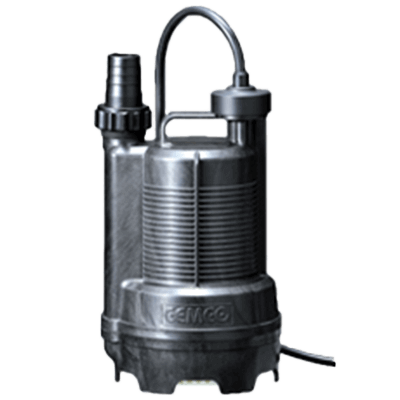What Is a Submersible Pump?

A submersible pump is designed to be fully submerged in water. It eliminates the need for a pre-installed suction port by allowing direct water intake through an inspection port, making it ideal for diverse industrial applications.
Applications of Submersible Pumps
Submersible pumps are extensively used in various settings, including sewage systems, where they help to minimize odors by being completely underground. Their affordability and portability also make them perfect for draining rainwater from construction sites, ensuring efficient water removal during adverse weather conditions.
Principle of Submersible Pumps
There are several types of submersible pumps, including electric, hydraulic, and flexible models. Electric submersible pumps, which may use either 100V single-phase or 200V three-phase power, are the most common. Hydraulic submersible pumps require a hydraulic unit but offer the advantage of compact equipment integration. Flexible submersible pumps, powered by an engine on land through a flexible shaft, avoid electrical and oil leakage risks, providing excellent cost performance for the same output.
Structure of Submersible Pumps
A submersible pump is composed of a protective casing, a power component, and a driving mechanism. The casing, often equipped with a metal mesh at the suction port, prevents large objects from obstructing the impeller. The power part, mainly the motor, is insulated from the liquid and casing, ensuring operational safety. The driving parts, including impellers and bearings, are essential for moving the liquid efficiently to the outlet.
Types of Submersible Pumps
Submersible pumps can be categorized into sewage pumps, freshwater pumps, corrosive liquid pumps, shallow water pumps, and construction drainage pumps, each tailored for specific applications ranging from sewage treatment to handling corrosive chemicals.
How to Choose a Submersible Pump
Selecting the right submersible pump depends on the application, from managing wastewater and supplying fresh water to dealing with corrosive liquids and construction site drainage. Each type has distinct advantages, addressing various environmental and operational challenges.